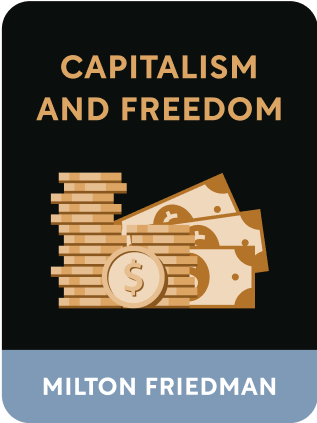
This is a free excerpt from one of Shortform’s Articles. We give you all the important information you need to know about current events and more.
Don't miss out on the whole story. Sign up for a free trial here .
Why is union membership declining? Are labor unions still relevant today?
U.S. union memberships are at an all-time low, but Americans’ support for them is at a record high. Though unions are optimistic about their future, some argue that they have considerable work ahead and significant obstacles to overcome to rebuild their ranks.
Read on to learn why union membership is declining despite increased support in the U.S.
Union Membership Is Declining—Why?
In 2022, U.S. union memberships dropped to an all-time low: 10.1 percent (14.3 million workers). Yet, today, unions are bullish about the prospect of building their ranks, with a 71% approval rate among Americans—the highest in more than a half century—and a wave of unprecedented organizing efforts at Amazon, Starbucks, and Apple. So, why is union membership declining even when union supporters are betting on a comeback? Could it be that the tide is turning for organized labor, and that unions will reclaim the base and clout they once had?
In this article, we’ll provide a brief history of unions and some of the problems they have faced, then we’ll examine why union membership is declining by looking at both the arguments supporting the rebirth of labor unions and those that claim unions have considerable work ahead to regain the status they once enjoyed.
A Brief History of Unions
Labor unions in the U.S. have been around since the country’s founding. Created to protect workers and end exploitative practices, they played a key role in stopping child labor; helped workers achieve higher wages and greater workplace safety protections; and narrowed the wage gap for women and workers of color.
What Problems Have They Faced?
In the classic 1962 book Capitalism and Freedom, Nobel Prize-winning economist Milton Friedman explains some of the problems that have notoriously afflicted labor unions, which could help explain why union membership is declining, including labor monopolies and decreasing wages for non-unionized industries.
Labor Monopolies
A labor monopoly is when a set of workers in an industry gains full control of its labor market. This is usually achieved through labor unions and “closed-shop” contracts, which stipulate that all employees hired by management must be members of the union (a topic we explored in the last chapter). With a labor monopoly, unions can demand higher wages of employers, the costs of which ultimately get passed along to consumers.
As with industrial monopolies, however, labor monopolies are rare. The vast majority of unions simply lack the kind of leverage necessary to exert this level of control. But even without a monopoly, there is a special danger that a heavily unionized workforce in a key industry can collude with the owners of capital in that industry (who would traditionally be the adversaries of labor) to drive up prices for consumers.
This is precisely what happened with the United Mine Workers (UMW) and the coal companies during the 1930s. The UMW scheduled strikes or work stoppages in order to halt the production of coal whenever the supply of coal in the market got too high. This had the effect of driving prices of coal up—with the union and the mine owners sharing in the profits of this collusion.
Wage Depressors
Although labor monopolies are rare, unions still influence the structure of the economy in important ways. Because of their collective bargaining power, unions drive up the price of labor in the industries where they are most prevalent. But by raising the “price” of labor, unions drive down the demand for labor in those industries—just as price increases in any industry cause buyers to either reduce overall demand or seek substitutes.
By reducing employment in one sector, unions then drive people to seek work in other sectors. This makes the labor markets in those sectors more competitive. Because employers in those industries have more workers competing over the same number of jobs, the result is to reduce wages in those non-unionized industries.
Labor unions tend to be most prevalent and powerful in those industries that feature a highly skilled labor force (which would likely receive higher wages even without the union) and weakest in those industries dominated by a low-skill workforce. Thus, the real effect of unions is to enrich highly skilled, highly paid labor at the direct expense of unskilled workers.
Unions: Betting on a Comeback
Unions see a bright future ahead despite the fact that membership is declining recently, arguing that the pandemic fundamentally altered Americans’ relationship with work and ongoing strikes positively impacted the public’s perception of organized labor—trends they expect to continue.
Union supporters say that front-line workers, the heroic if beleaguered face of functioning society when COVID-19 shut down the broader U.S. economy, came to represent and reflect resentment that many Americans feel about getting paid low salaries and being treated poorly on the job, particularly as corporations profit in the billions. In 2022:
- A Brookings report found that workers’ salaries at a majority of 22 large corporations studied were too low to survive—and concluded that rising interest in union representation should surprise no one.
- Workers went on strike more than 300 times—a record high since 2005.
- The National Labor Relations board received more than 2,500 union representation petitions for the 12-month period ending on September 30—a 53% increase from a year before and the highest number since 2016.
Critics: Don’t Call It a Comeback
Skeptics argue unions have a tough road ahead if they hope to rebuild to their glory days. To overcome the recent decline in union membership and succeed, they’ll have to:
- Shed their bureaucratic skin, become more agile, and attune themselves to the voices of prospective members.
- Bring non-believers on board. Though public support for unions is currently high, one Gallup survey found that nearly 60% of non-union employees want no part of unions: Some because they believe that membership dues will suck money out of their pockets with no corresponding guarantee of better working conditions, others because they fear unions will divide the workplace.
- Contend with union-resistant employers. Companies spend roughly $340 million a year on consultants to block union elections. Many illegally curb union activity by shutting down locations where it’s present, firing union backers, and refusing to bargain in good faith with workers who have voted for representation.
Further, widespread white-collar tech layoffs could worsen the decline in union membership even further. In recent years, unions have homed in on the tech industry as a source of new members. In 2022, the AFL-CIO increased membership fees for the first time in twenty years to target organizing funds toward industries where it hopes to gain footing. But ongoing tech company layoffs—including some 100,000 since October 2022—are whittling away at their target base.
Even without these cuts, critics say that unions’ tech industry organizing efforts fall short, centering on outdated, non-digital work structures. And no single union has staked a claim to tech workers yet, leaving the talent pipeline under-tapped and unions to compete for new blood.

Want to fast-track your learning? With Shortform, you’ll gain insights you won't find anywhere else .
Here's what you’ll get when you sign up for Shortform :
- Complicated ideas explained in simple and concise ways
- Smart analysis that connects what you’re reading to other key concepts
- Writing with zero fluff because we know how important your time is







